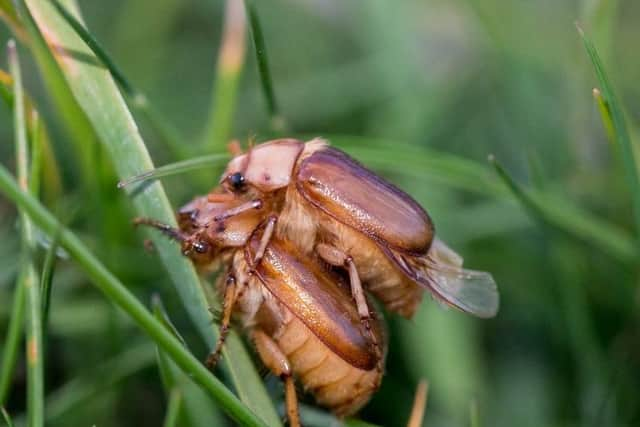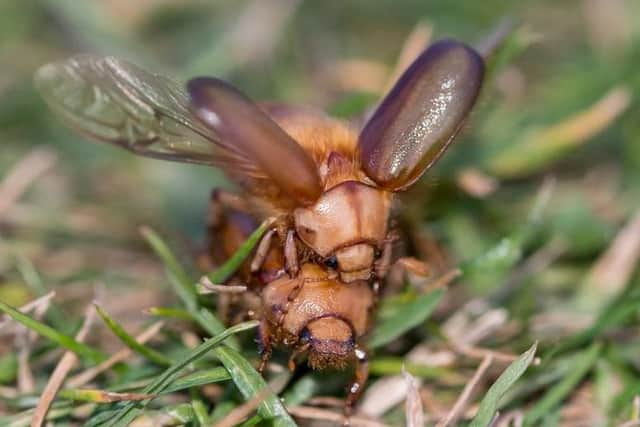Rare beetle found in Newhaven nature reserve
and live on Freeview channel 276
The brown-striped summer chafer has never been seen in the UK outside the Channel Islands.
Experts believe the bug, which emerges shortly after sunset each night for only 25 minutes, ‘hitched a ride’ on a boat across the Channel.
Advertisement
Hide AdAdvertisement
Hide AdAnd there is now a large colony along the coast in Newhaven.


It was found by Steven Teale, specialist adviser at Lewes District Council, after he saw a beetle photographed at the end of April last year by Sue Cross, a member of the Friends of Castle Hill Local Nature Reserve.
Steven said: “It is rare for such a large, conspicuous and charismatic beetle to have been overlooked until now. It is probable that it hitched a lift, possibly on more than one occasion, on a boat across the English Channel rather than making the journey on its own.
“Its bulk, relatively poor navigational skills and the fact that it is active for less than half an hour each night make a journey under its own steam unlikely.”
Advertisement
Hide AdAdvertisement
Hide AdThe beetle is similar in appearance to other familiar beetles including the cockchafer and summer chafer, but it is smaller and less hairy. Like many other chafer species, it feeds as a larva on the roots of plants.


Adults of the striped summer chafer appear slightly earlier in the year than other closely related species, from April until June.
During this short time the males search for females, which perch low down on grass stems and appear to produce pheromones to attract the males.
Steven added: “Although this chafer is much less clumsy than cockchafers and summer chafers, it is still quite clumsy and can take some time to home in on a female.
Advertisement
Hide AdAdvertisement
Hide Ad“Clusters of several amorous males can be found clambering over a female and, where more than one female is in the same patch of ground, up to several dozen males have been found in a scrum around them.”
A message from the Editor, Gary Shipton:
In order for us to continue to provide high quality and trusted local news, I am asking you to please purchase a copy of our newspapers.
With the coronavirus lockdown having a major impact on many of our local valued advertisers - and consequently the advertising that we receive - we are more reliant than ever on you helping us to provide you with news and information by buying a copy of our newspapers.
Our journalists are highly trained and our content is independently regulated by IPSO to some of the most rigorous standards in the world. But being your eyes and ears comes at a price. So we need your support more than ever to buy our newspapers during this crisis.
Stay safe, and best wishes.